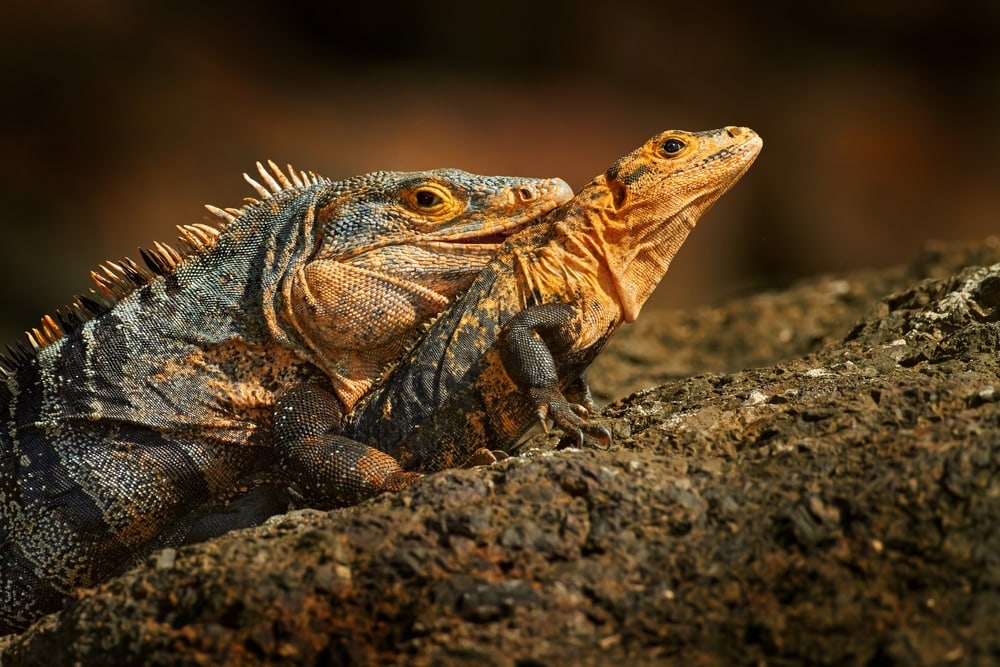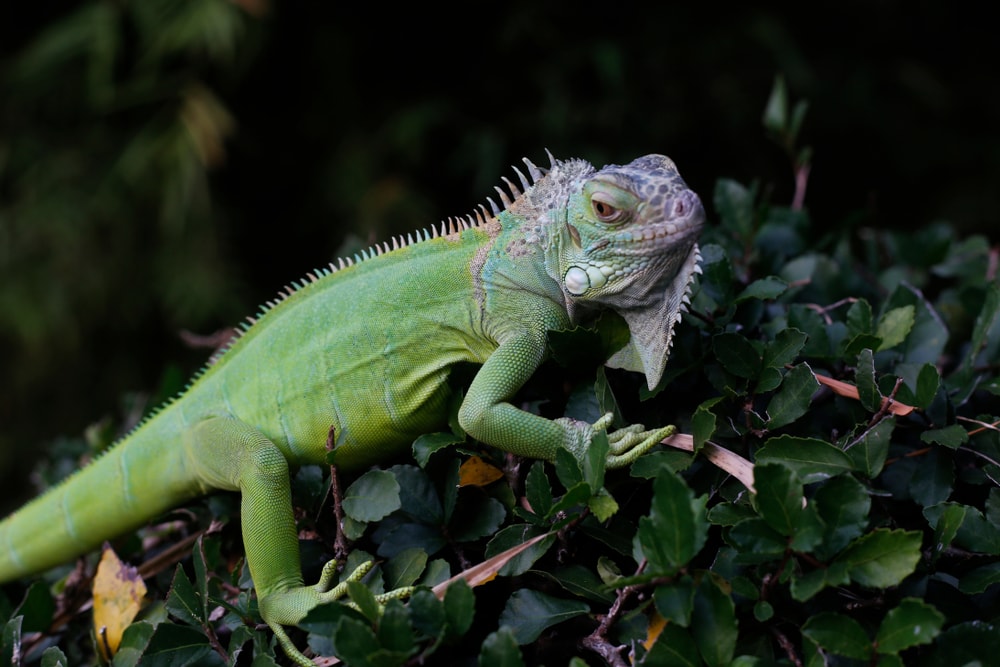
Florida has no native species of iguana. The three species living there today are invasive species. They were likely introduced sometime in the 1970s.
The relationship between these majestic creatures and their environment remains strained. Their diet, breeding, and behavior make them nuisances to residents. The iguanas go relatively unchecked by predators and can destroy habitats.
The growing populations have forced the state to reckon with the invasive creatures.
Wildlife rehabilitators and lawmakers are still looking for a way to cap the iguanas’ potential damage. This led to the introduction of predators, euthanasia, and relocation. However, these have been tested with mixed results.
Managing an invasive species is a complicated task. That’s why the relationship between Florida and its iguanas is a case study worth learning.
Continue reading below to know the behaviors of these three iguanas. Learn how to identify them and what you can do if you encounter one.
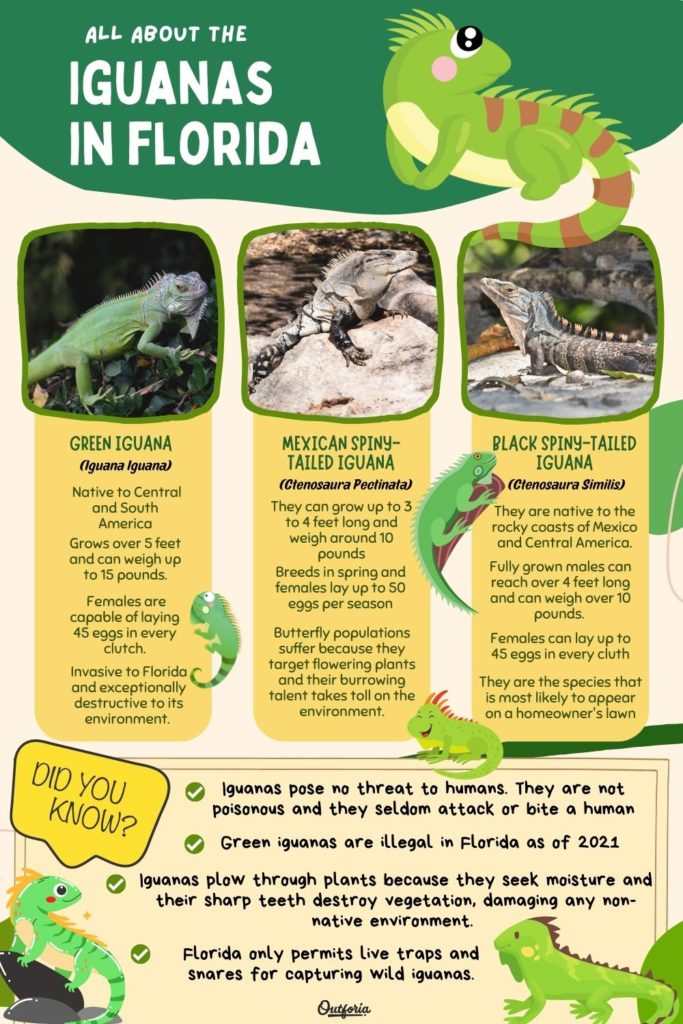
SHARE THIS IMAGE ON YOUR SITE
<a href="https://outforia.com/iguanas-in-florida/"><img style="width:100%;" src="https://outforia.com/wp-content/uploads/2022/09/iguanas-in-Florida-infographic-683x1024.jpg"></a><br>iguanas in Florida<a href="https://outforia.com">Outforia</a>1. Green Iguanas (Iguana Iguana)
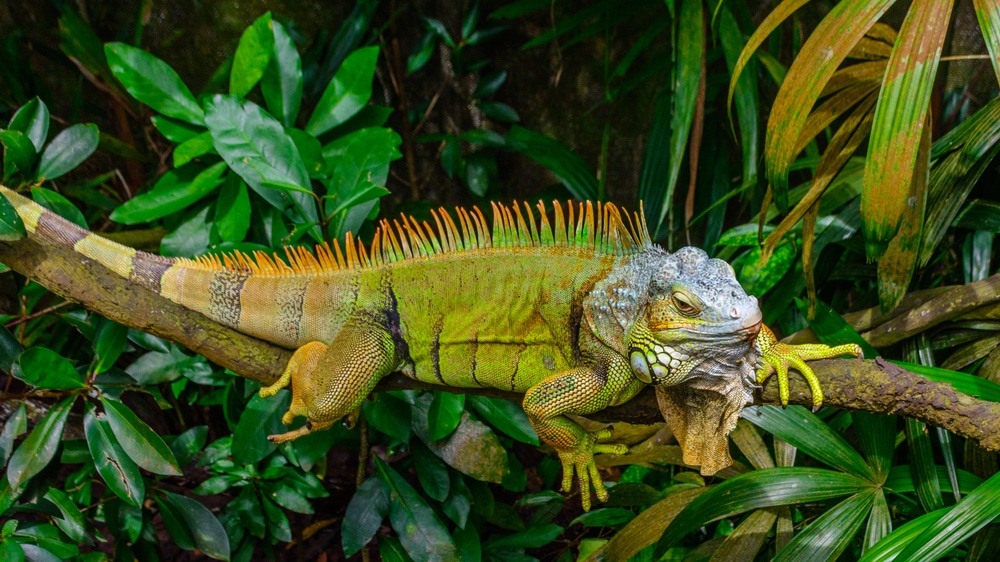

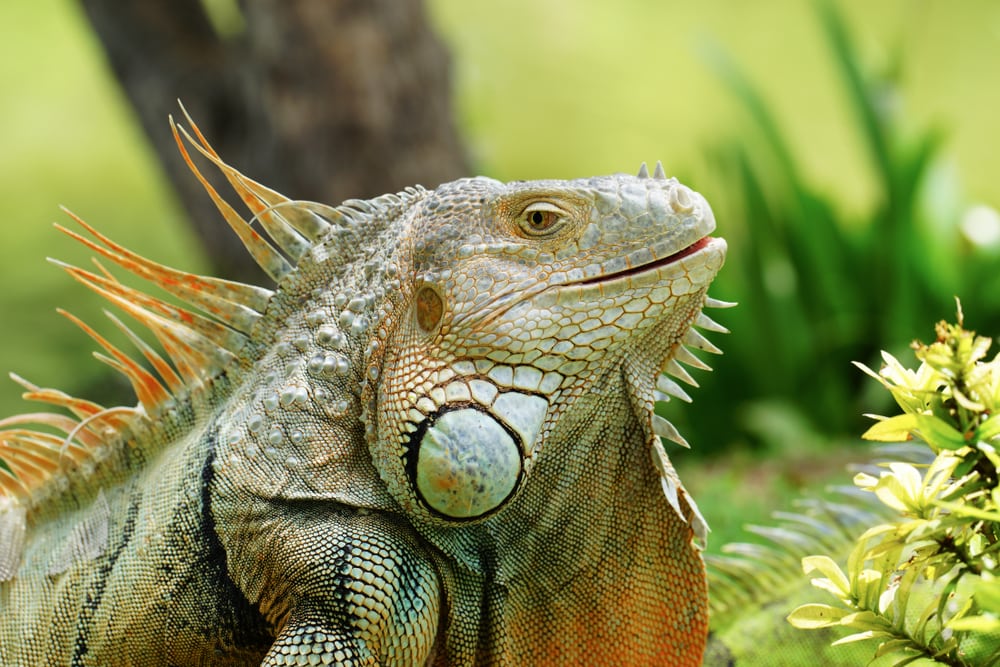
Florida’s most prolific iguana is the most substantial of all invasive species. The green iguana grows over 5 feet (1.5 meters) and can weigh up to 15 pounds (6.8 kilograms).
These iguanas are shades of emerald green with large spikes running down their back and tail. Green iguanas also have a large dewlap for regulating their body temperature. They present their dewlap to potential mates during courtship.
The green iguana’s tail is its primary weapon. It’s capable of whipping other animals when threatened. When ensnared, an iguana can detach its tail and grow another one.
Green iguanas also have a unique defense system, a third eye. On the forehead, they have a primitive pineal gland. The gland is not capable of forming images like the other two. They use their parietal eye to sense changes in light and track predators above.
Green iguanas are herbivores. However, their diet in Florida does not provide enough water to regulate their body temperatures. As a result, the iguanas tear through plant matter, leaving little behind.
Green iguanas are prolific breeders. Females are capable of laying 45 eggs in every clutch. With few natural predators, most of their young reach reproductive maturity.
Originally the species spreading to the north of the state was not a concern to the state. The iguanas naturally cannot handle freezing temps, but new developments have changed that.
Climate change has made for milder winters, and the iguanas are adapting. If temperatures drop into the 40s, the iguanas will “freeze.” Floridians encounter a lot of stiff, frozen iguanas during winter.
The iguanas aren’t dead, only under temporary paralysis. As cold-blooded creatures, they naturally cannot warm their bodies up. Iguanas drop on sidewalks and roads and wait for the sun. The heat from the road “defrosts” the blood allowing the iguanas can move again.
Green Iguanas in Florida
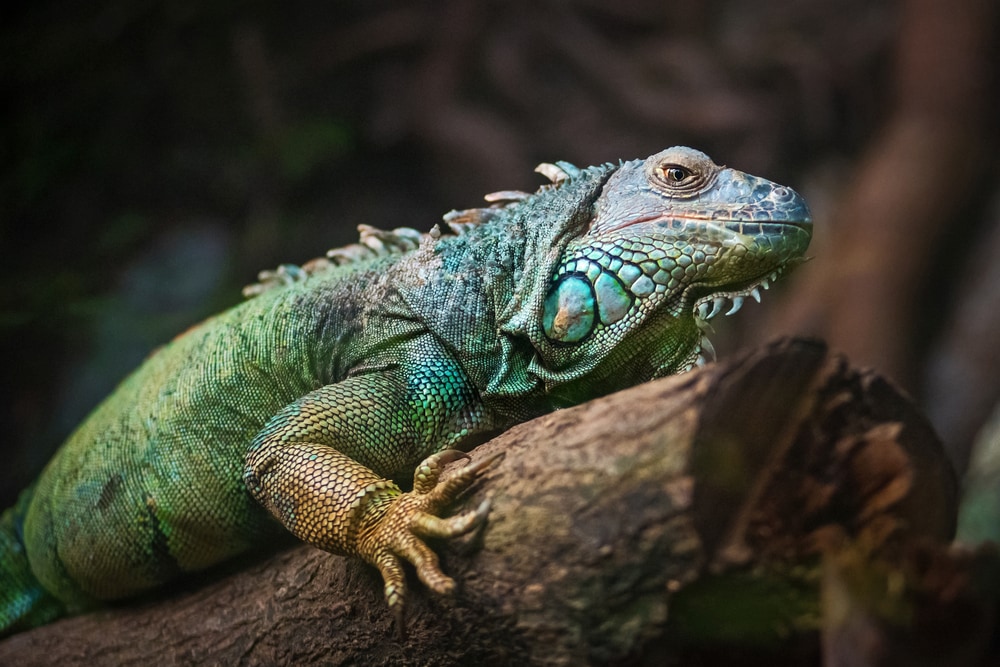
This species is invasive to Florida and exceptionally destructive to its environment.
The ensuing population boom has officials in Florida looking for new solutions. The current idea is to introduce more of their predators into their environment. Raptors and owls get released to help with population control.
Zoo Miami has tried a similar method. The zoo has introduced iguanas into the diets of captive eagles and birds. Zoologists hope the eagles adjust their diet to include iguanas in captivity. If all goes to plan, the birds will hunt iguanas upon their release.
Green iguanas are native to Central and South America. The iguanas first established populations in the Florida Keys. Today, they are still found in abundance. It’s thought the green iguanas first hitched a ride on South American fruit ships.
In the following years, careless pet owners released the iguanas into the wild.
Green iguanas now live in northern parts of the state. Their destructive nature then forced the hands of lawmakers. Once popular pets, green iguanas are now illegal in Florida as of 2021. The state enacted the measure in hopes of controlling the invasive populations.
2. Mexican Spiny-tailed Iguanas (Ctenosaura Pectinata)
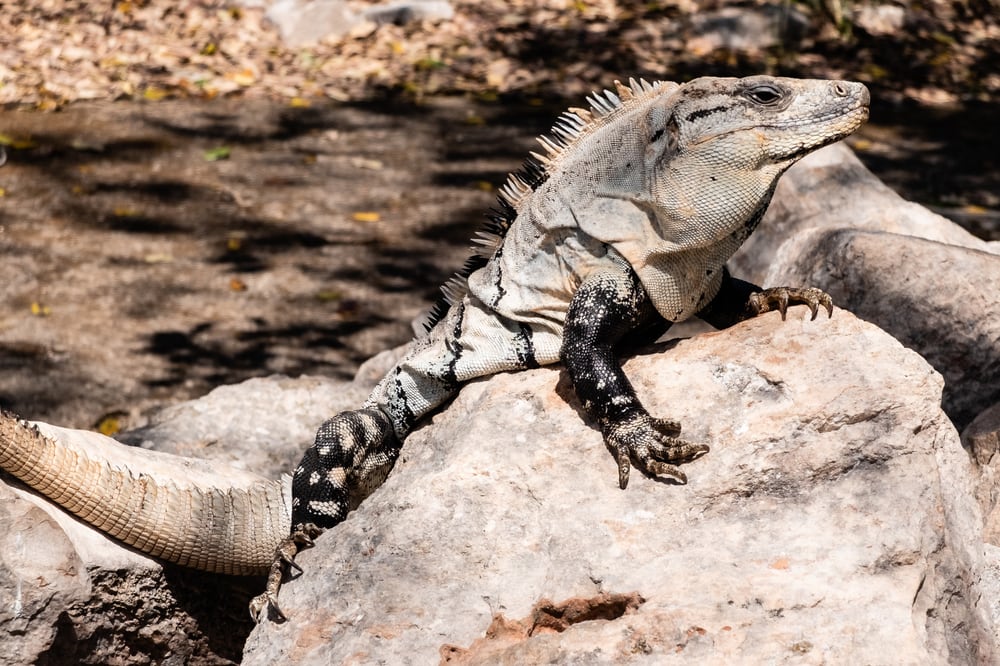
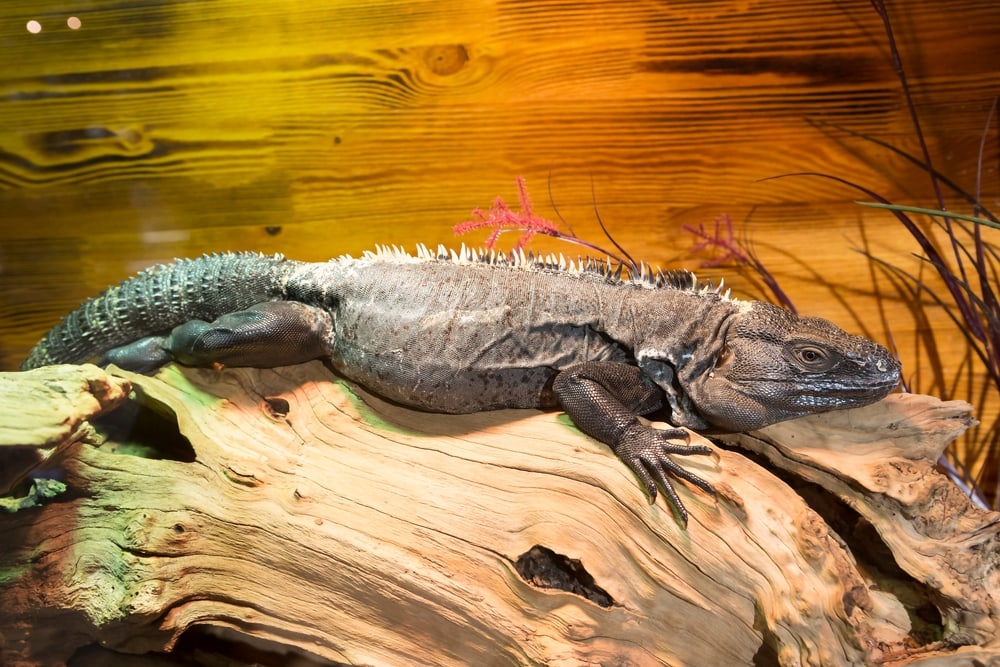
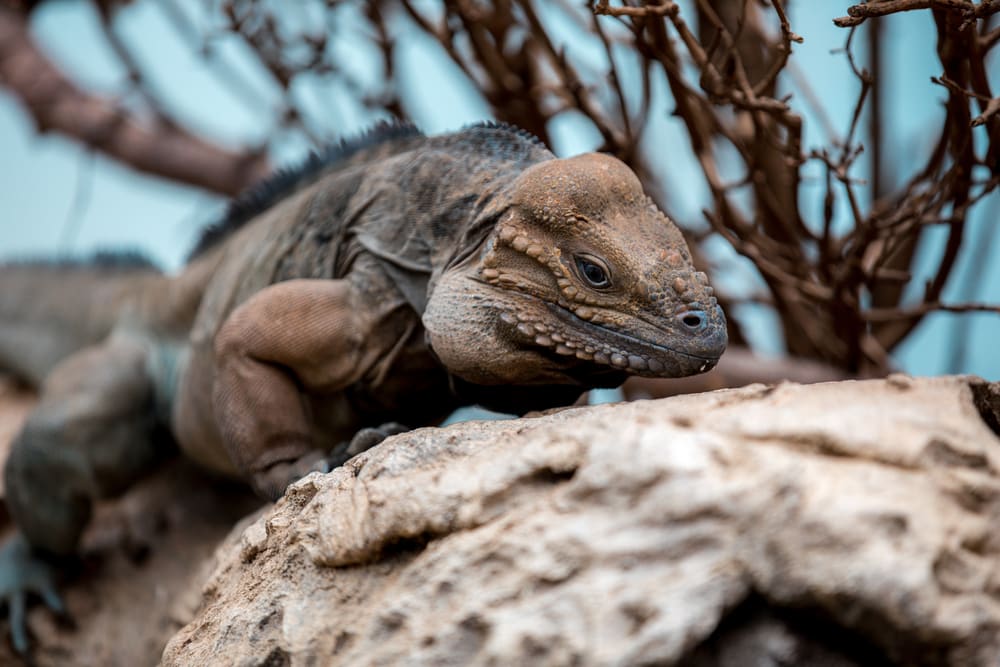
Mexican spiny-tailed iguanas are another introduced species to Florida. The species is native to western Mexico and is often known as the western spiny-tailed iguana.
Mature iguanas have grey-brown bodies with long spines running down. The spines act as a defense system from predators above. They also bite or swing their tails when threatened. Their bland body contrasts their yellow belly and lower mouth.
Adult iguanas grow to 3 to 4 feet (1 to 1.3 meters) long and weigh around 10 pounds (4.5 kilograms). Their size guarantees very few predators in South Florida. The only animals known to take adult iguanas are alligators and raptors.
Eggs and juvenile iguanas get preyed on by birds, raccoons, and fish. However, iguana eggs can sometimes be impossible to reach. The species is an excellent burrower and can dig holes over 5 feet (1.5 meters) deep.
The iguanas breed in the spring, and females lay up to 50 eggs per season. Breeding begins with males bobbing their heads and darting around potential mates. When the male has decided, he chases the female until they can mate.
The relationship lasts as long as the act of mating. Females are left to burrow and guard the eggs for up to 90 days. Upon hatching, juveniles appear bright green. It won’t be until they reach a year old that the color begins to fade.
Mexican Spiny-tailed Iguanas in Florida
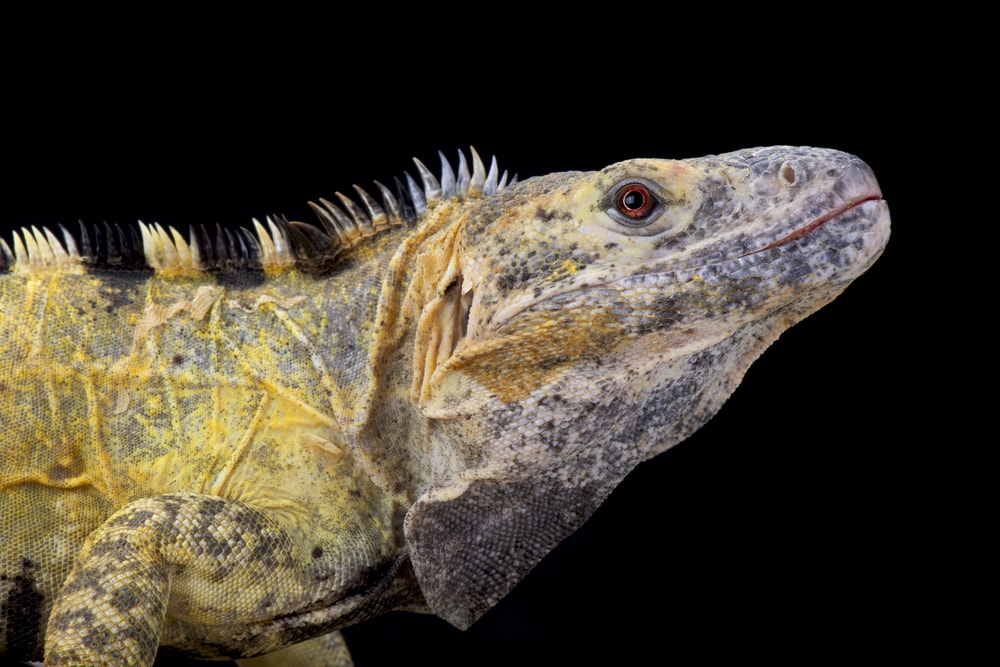
Their burrowing talent takes its toll on the environment around them. The burrow goes so deep it can shift building foundations or damage roads.
Southern Florida’s system of canals gets threatened by iguana burrows regularly. The iguanas are proficient swimmers and prefer being close to a water source.
Iguanas like to burrow around sea walls and can cause them to collapse. The resulting erosion is incredibly damaging to the water quality.
Florida is already susceptible to natural disasters, and building foundations get tested annually. If iguanas burrow too close to a foundation, stability becomes uncertain. During hurricane season, the work of this invasive species can be detrimental.
Like all species on the list, the iguana population boomed after pet owners released them in 1978. The illegal releases started a boom of Mexican spiny-tailed iguanas in the following years.
With so many young born annually, there won’t be enough habitat to share. Iguanas come equipped with razor-sharp teeth designed to shred plant matter. These opportunistic feeders also eat small animals and insects.
Their plant diet poses more of a threat to the environment they occupy. Iguanas need massive amounts of plant matter to regulate their internal temperature. This drives them to destroy residential and commercial vegetation.
Since they target flowering plants, butterfly populations have suffered in southern Florida. Scientists believe invasive iguanas helped drive the Miami blue butterfly to near extinction. With fewer flowering plants available, the iguana’s effect impacts many species.
3. Black Spiny-tailed Iguanas (Ctenosaura Similis)
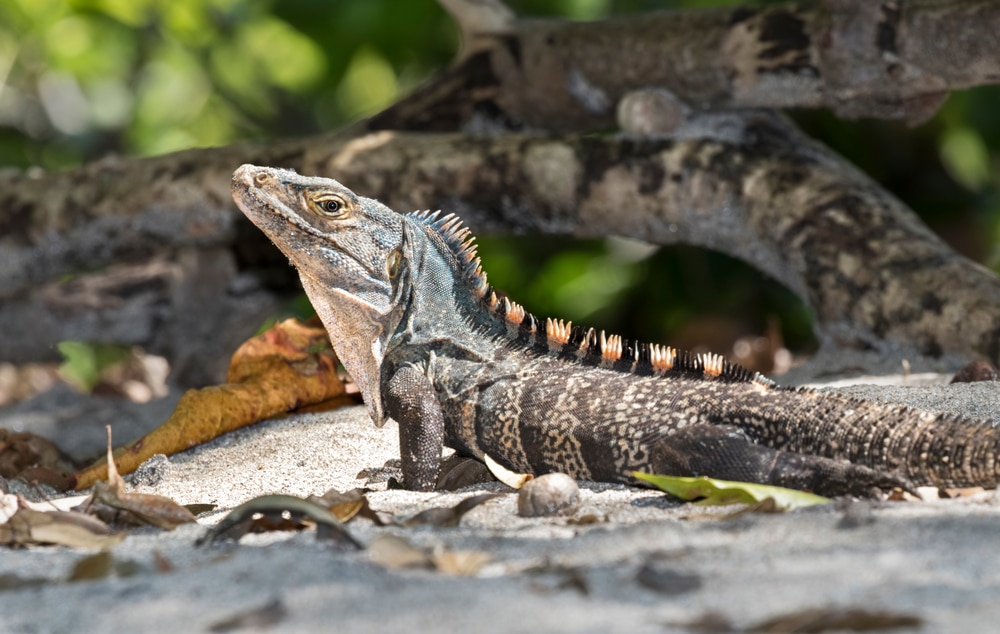
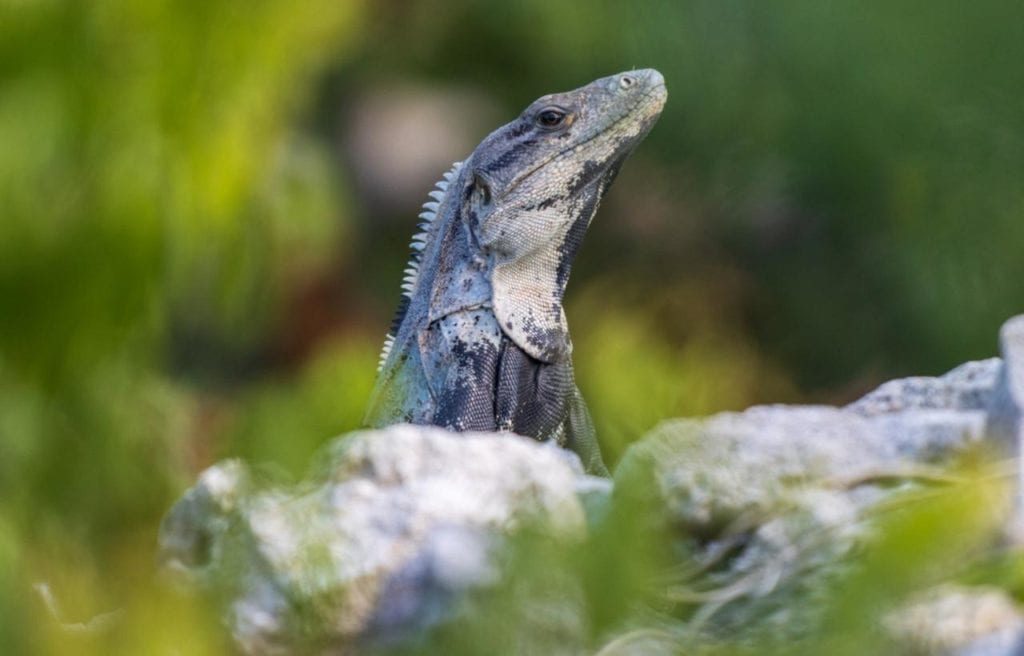
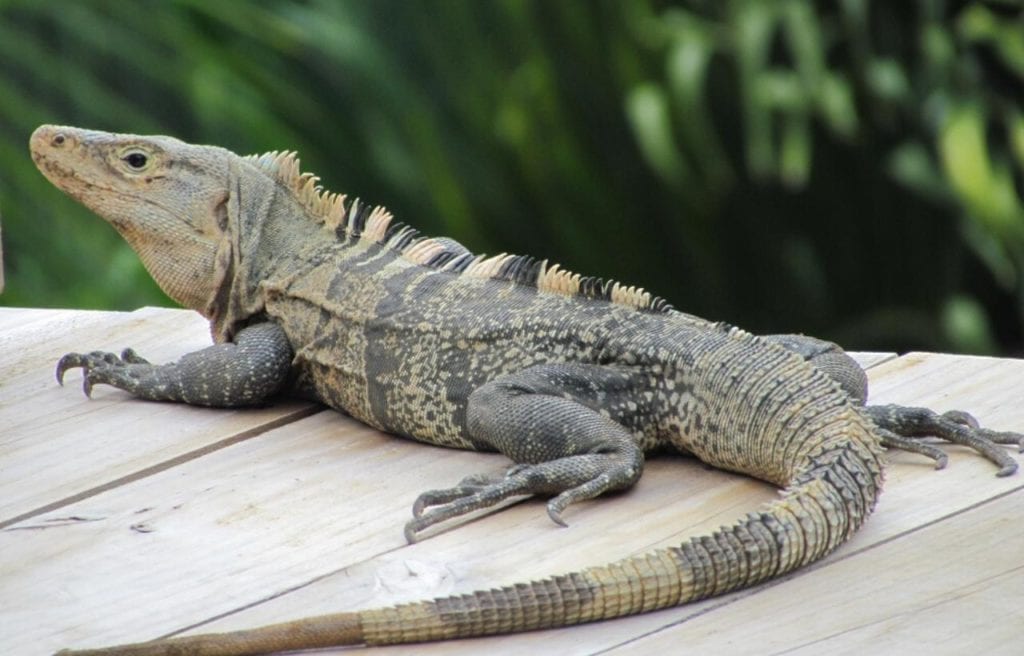
Another growing headache for residents of Florida is the black spiny-tailed iguana. In recent years, populations have exploded across the south of the state.
These species appear similar to their close relatives, the Mexican spiny-tailed iguana. Their bodies are black and gray, and some have black bars running down the torso and tail. They also have short spines starting at the neck that run the length of the body.
The coloration of these iguanas varies from population to population. There can be anywhere from 4 to 12 black bands on the body, and the shades of gray differ among individuals.
Fully grown males can reach over 4 feet (1.2 meters) long and weigh over 10 pounds (4.5 kilograms). Female iguanas are slightly smaller and only grow to around 3 feet (1 meter) in length.
The black spiny-tailed iguana is native to the rocky coasts of Mexico and Central America. It seeks out rock piles to hide and hunt in. In their native range, locals hunt and farm the iguanas for their meat.
The species earned the nickname “chicken of the trees.” Some farmers continue to raise them for commercial consumption. The iguanas maintain a stellar reputation across their native range. They’re especially popular in the pet trade and commercial farming.
Like all invasive iguanas, the black spiny-tailed is an aggressive breeder. Female iguanas lay up to 45 eggs per clutch, and many live to see adulthood.
A female Ctenosaura does not need a male to lay multiple clutches. After mating, females are capable of incubating extra sperm. The sperm remains viable for seasons to come, and females can lay a clutch without the presence of a male.
After mating, females are responsible for creating a burrow for their eggs. They seek out sandy ground and begin burrowing down multiple feet. Despite the young being born independent, mothers will stay with hatchlings for months.
Young iguanas are born with the ability to feed and hunt without their mothers. As opportunistic feeders, they mainly eat plant matter and small vertebrates. This species is the most omnivorous eater on the list.
Throughout their life, iguanas will eat an abundance of plant matter. This species also chooses to seek crustaceans, small vertebrates, insects, and other lizards for fuel.
Their diet threatens vulnerable species like sea turtles during their breeding season. Iguanas love to eat eggs and have a habit of digging up sea turtle nests.
Few animals are more vulnerable than a baby sea turtle making its way to the sea. Iguanas have adapted to picking off young making their way to the ocean.
Black Spiny-tailed Iguanas in Florida
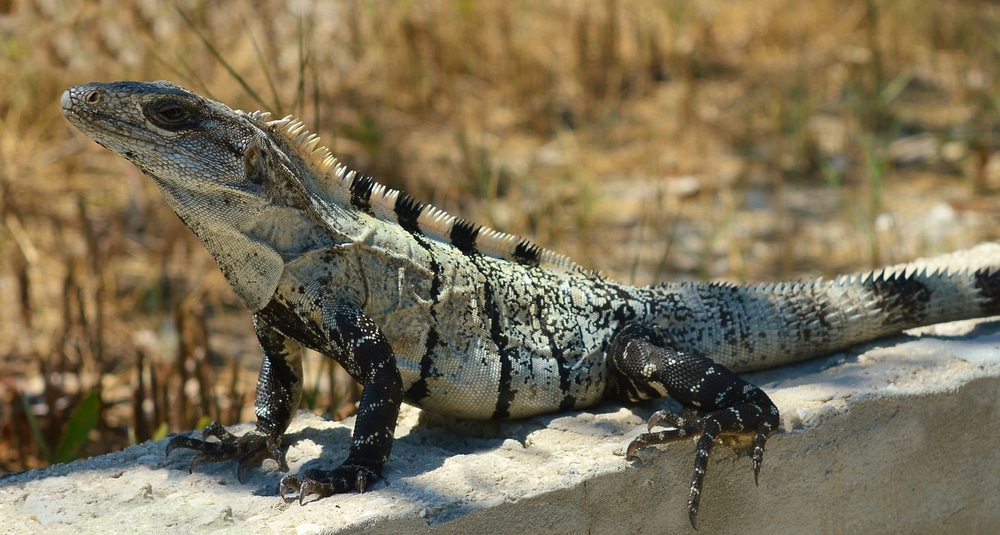
Invasive iguanas were introduced to new areas as commercial shipping became prominent. First, it was across central America and then the Caribbean. Not long after, irresponsible pet owners introduced the iguanas to southern Florida.
Research speculates that black spiny-tailed introduced South American plants to Florida. The Brazilian pepper appeared around the same time. Researchers found the same peppers in iguana feces. Apparently, the seeds were spread via feces.
The black spiny-tailed also takes its toll on south Florida. Of all the species, this one is likely to appear on a homeowner’s lawn.
Residential neighborhoods of South Florida are built on the sandy ground iguanas love. Building foundations suffer when too many iguanas decide to burrow in a yard.
The population has not expanded as much as the green iguana, however. The spiny-tailed species have not developed the same resistance to the cold. As long as the range is limited to South Florida, the iguanas continue as a legal pet.
You may also like: 18 Most Common Types of Lizards in Florida
How Do You Get Rid of Iguanas In Your Yard?
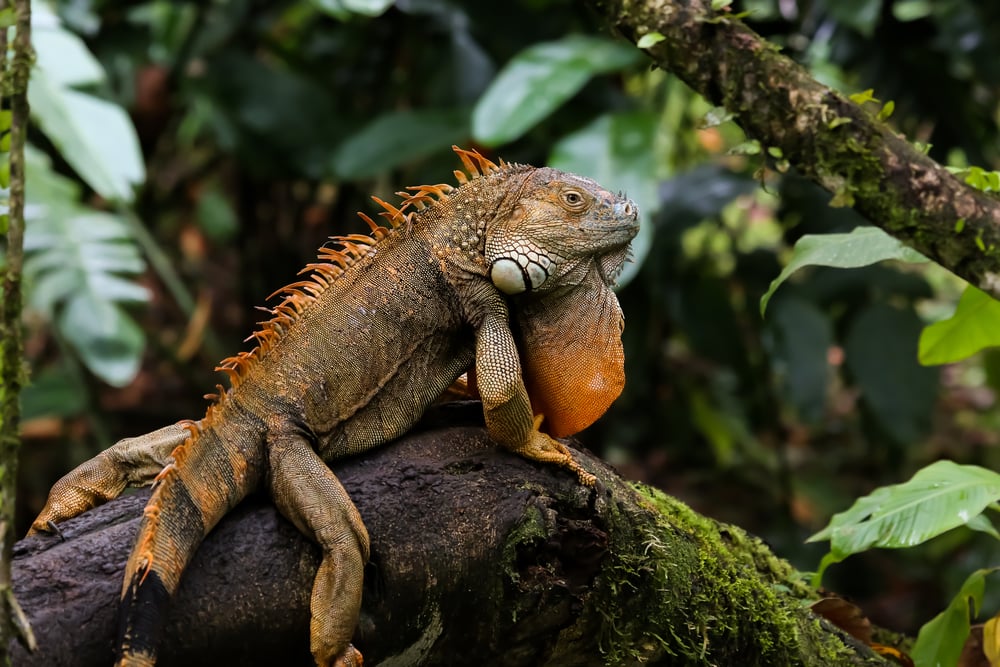
If iguanas are becoming a nuisance in your yard, the steps you can take depends on where you live.
Firstly, check local regulations and call a professional to remove them.
Humanely removing the iguanas is encouraged by many areas of the state. Homeowners can buy traps, noose poles, and nets to safely remove the creatures. Florida only permits live traps and snares for capturing wild iguanas.
When homeowners capture an iguana, they’re responsible for feeding it once every 24 hours until authorities arrive. You cannot take the iguana and release it elsewhere. If captured, it has to be euthanized or turned over to authorities.
Options are limited today. The spike in iguana captures has wildlife rehabilitation centers at capacity. Unfortunately, this is forcing many captured iguanas to euthanasia. The iguanas suffer today because of the irresponsible pet owners of the past.
You may also like: The 8 Species of Anoles in Florida: ID Guide with Photos
Are iguanas dangerous or poisonous?
Iguanas are not dangerous or poisonous to humans. They seldom attack or bite a human. They only strike something larger than themselves if they get cornered.
How damaging are they to their environment?
Iguanas are incredibly damaging to any non-native environment. The instinct to seek moisture drives iguanas to plow through plants. Their sharp teeth enable them to destroy an unhealthy amount of vegetation. Their diet leaves less oxygen in the environment. It also takes away food sources for pollinators.
What threats do iguanas pose to Florida?
Iguanas pose more threats to Florida than the environmental ones listed above. They like to burrow near water sources and use the sea wall as a starting point. Sea walls collapse when iguanas burrow in the wrong place. The iguanas are also known to chew and burrow through utility lines.



